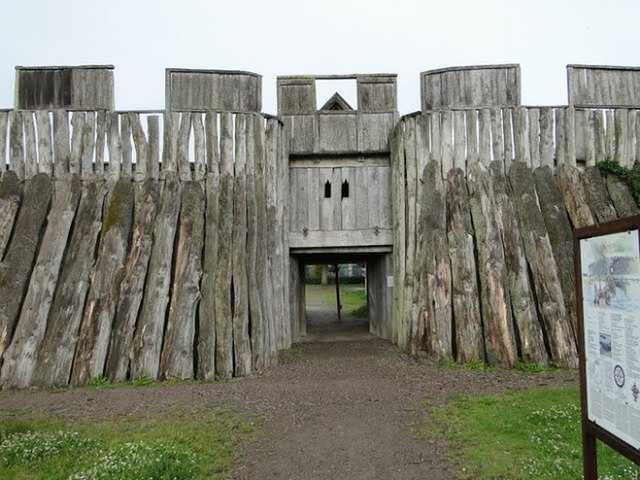Located in the Danish town of Slagelse, the Trelleborg Viking Fortress stands as a testament to the ingenuity and strategic prowess of the Vikings. This circular fortress, one of the best-preserved of its kind, offers a fascinating glimpse into the Viking Age, a period that shaped much of Northern Europe’s history.
Get your dose of History via Email
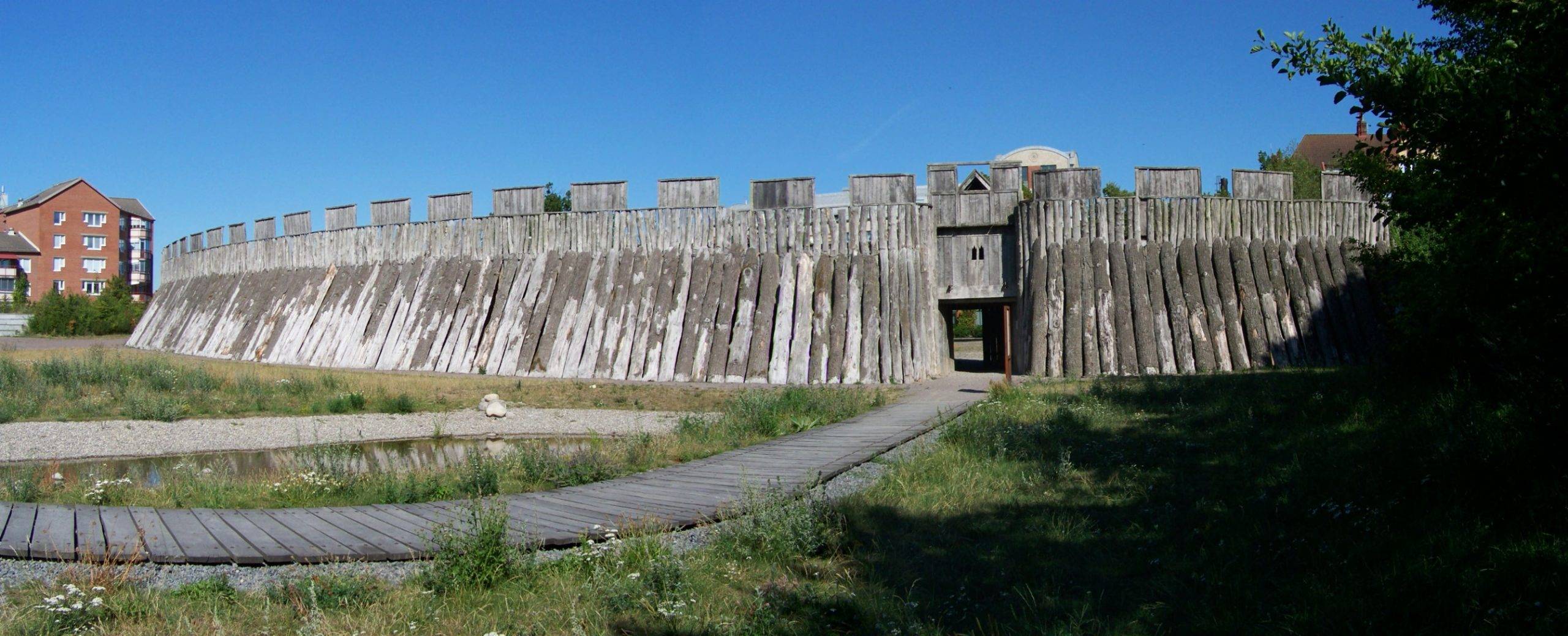
Historical Background
The Trelleborg Viking Fortress dates back to the late 10th century, during the reign of the Danish King Harald Bluetooth. It is one of the seven known ‘Trelleborg’ fortresses, named after the first discovered example, which exhibits a distinctive circular design. These fortresses were likely built as part of a coordinated defense and military training system across Denmark, showcasing the Vikings’ advanced understanding of warfare and logistics.
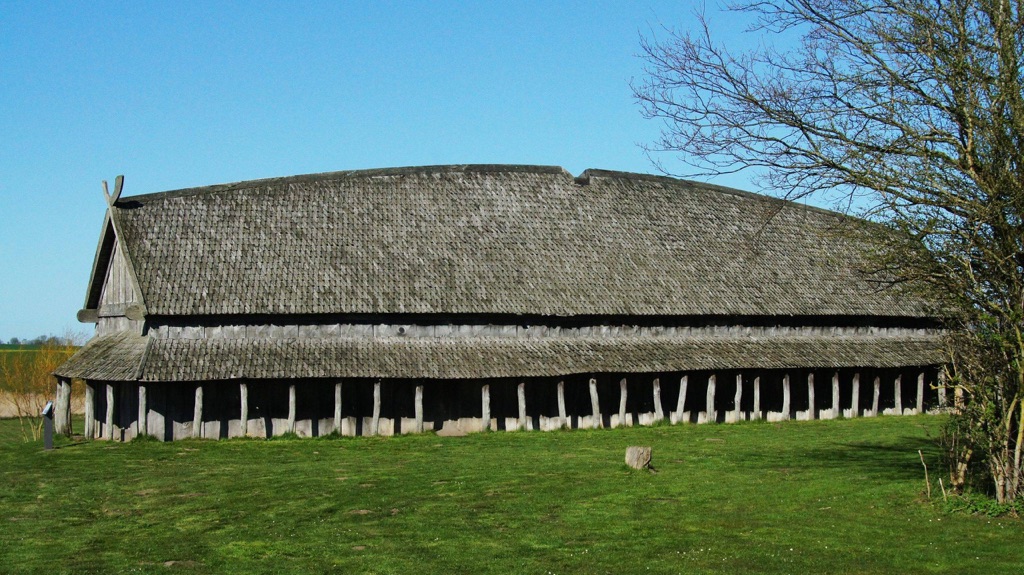
Architectural Highlights
The Trelleborg fortress is characterized by its unique circular design, with a diameter of 137 meters. The fortress consists of a rampart, a moat, and four main gates positioned at the cardinal points. The rampart itself is approximately 17 meters wide and originally stood 5 meters high, constructed primarily from earth and wooden palisades.
Inside the fortress, the layout is equally impressive. The interior is divided into quadrants by two main roads that intersect at the fortress’s center. Each quadrant houses four longhouses arranged symmetrically around a square. The longhouses, built from timber, were likely used as barracks for the Viking warriors.
The materials for the construction were likely sourced locally, given the Vikings’ adeptness at utilizing available resources. The precision and symmetry of the fortress layout suggest a high level of planning and organization, further underscoring the Vikings’ architectural prowess.
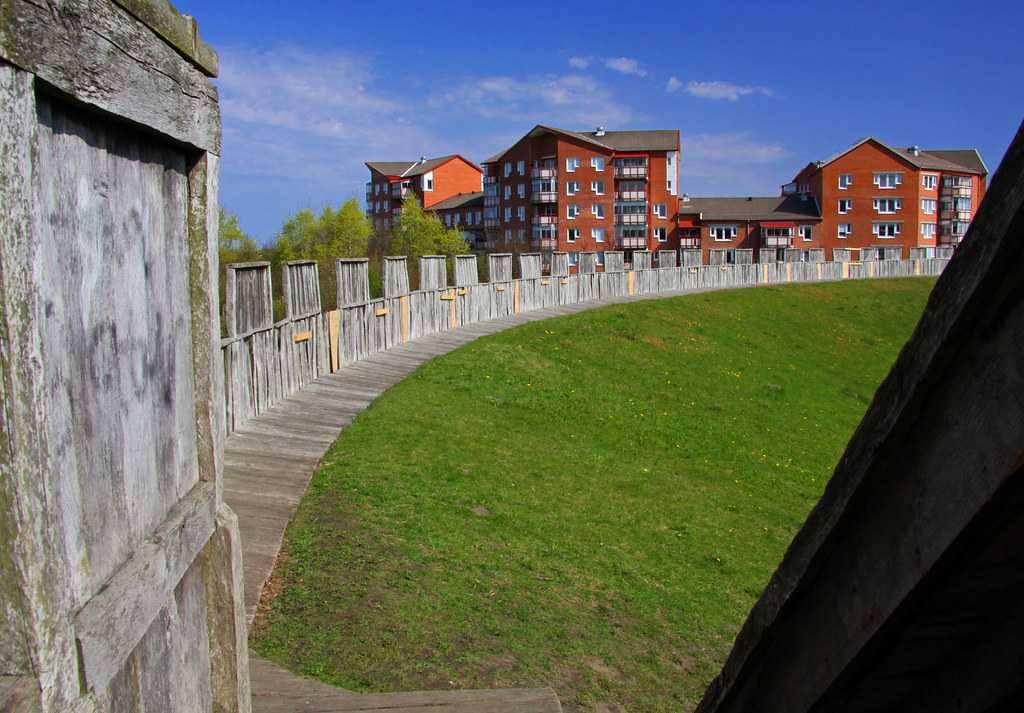
Theories and Interpretations
While the primary function of Trelleborg as a military fortress is widely accepted, there are several theories about its specific purpose. Some scholars suggest that it served as a training base for elite Viking warriors, while others propose that it was a royal fortress, possibly even a residence for King Harald Bluetooth himself.
Archaeological evidence, including the discovery of women’s jewelry and children’s toys, suggests that the fortress was not solely a military base but also housed families. This finding has led to theories that Trelleborg may have served as a model for a new type of community, combining military, administrative, and civilian functions.
The dating of Trelleborg has been achieved through dendrochronology, a method that uses tree-ring patterns to determine the age of timber. This method has confirmed that the fortress was built around 980 AD.
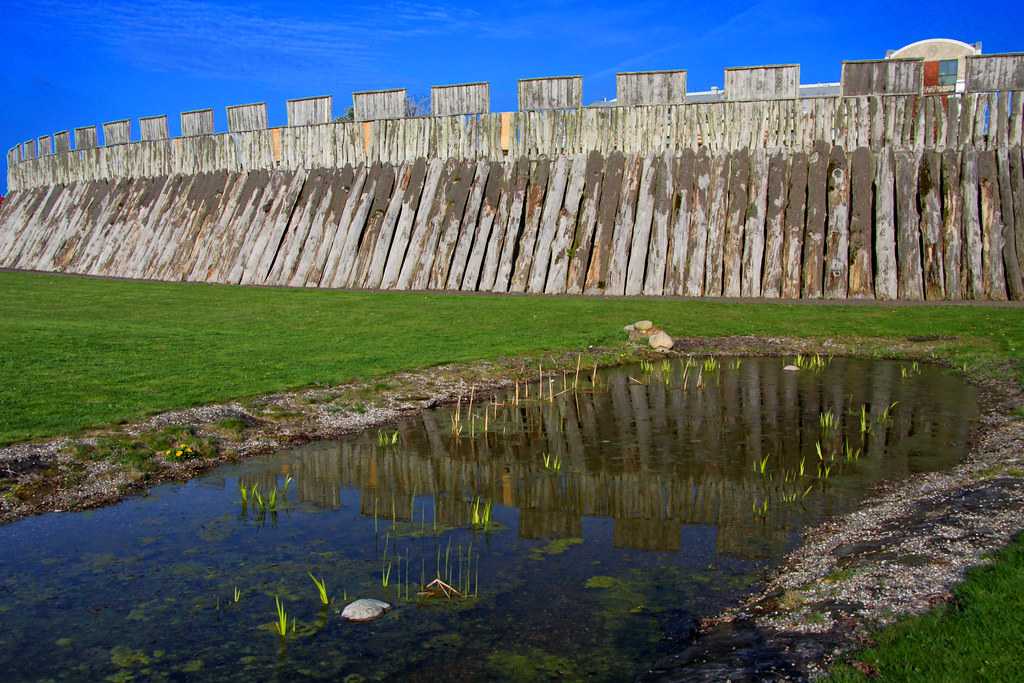
Good to know/Additional Information
Today, Trelleborg Viking Fortress is not just a historical site but also a vibrant cultural center. The site hosts a museum showcasing artifacts discovered during archaeological excavations, including weapons, jewelry, and everyday items. A reconstructed Viking village offers visitors a chance to experience Viking life firsthand, complete with traditional crafts, Viking games, and even a chance to try on Viking armor.
Trelleborg is also the site of an annual Viking festival, where reenactors bring the Viking Age to life with battles, crafts, and traditional Viking food. This celebration of Viking culture makes Trelleborg a must-visit for anyone interested in the rich and complex history of the Vikings.

